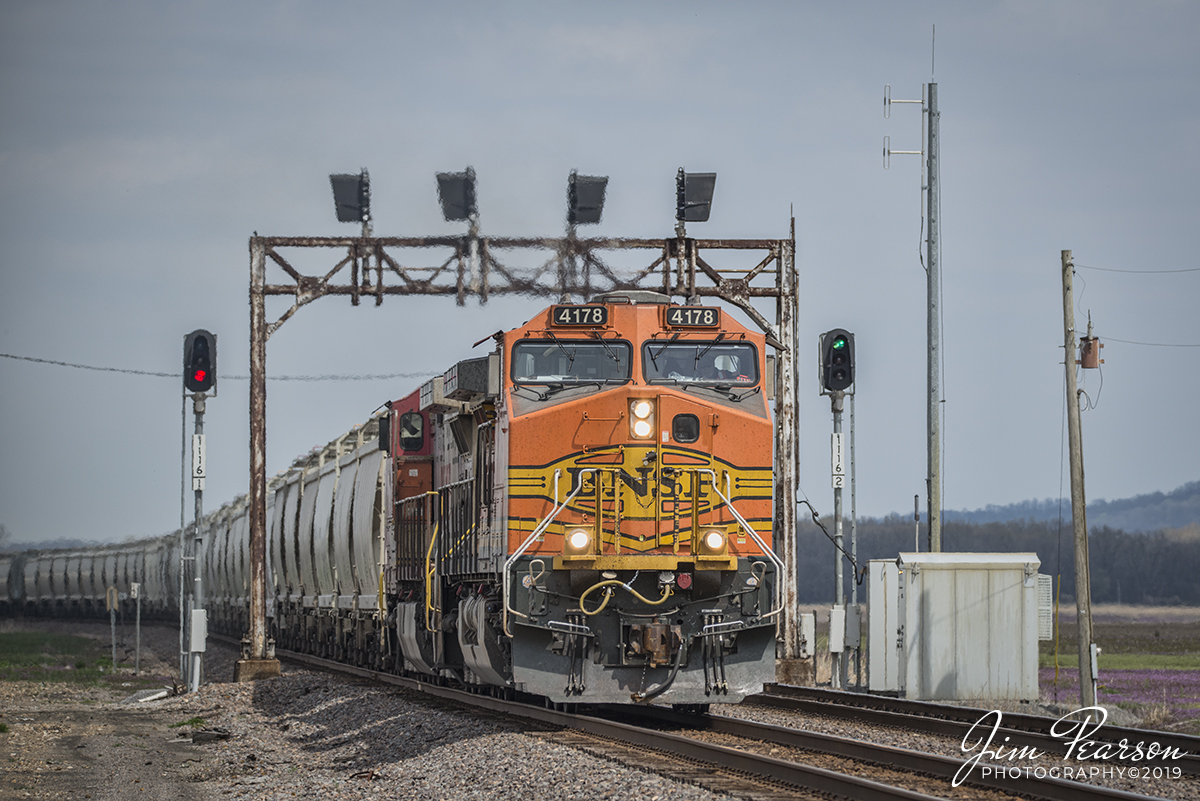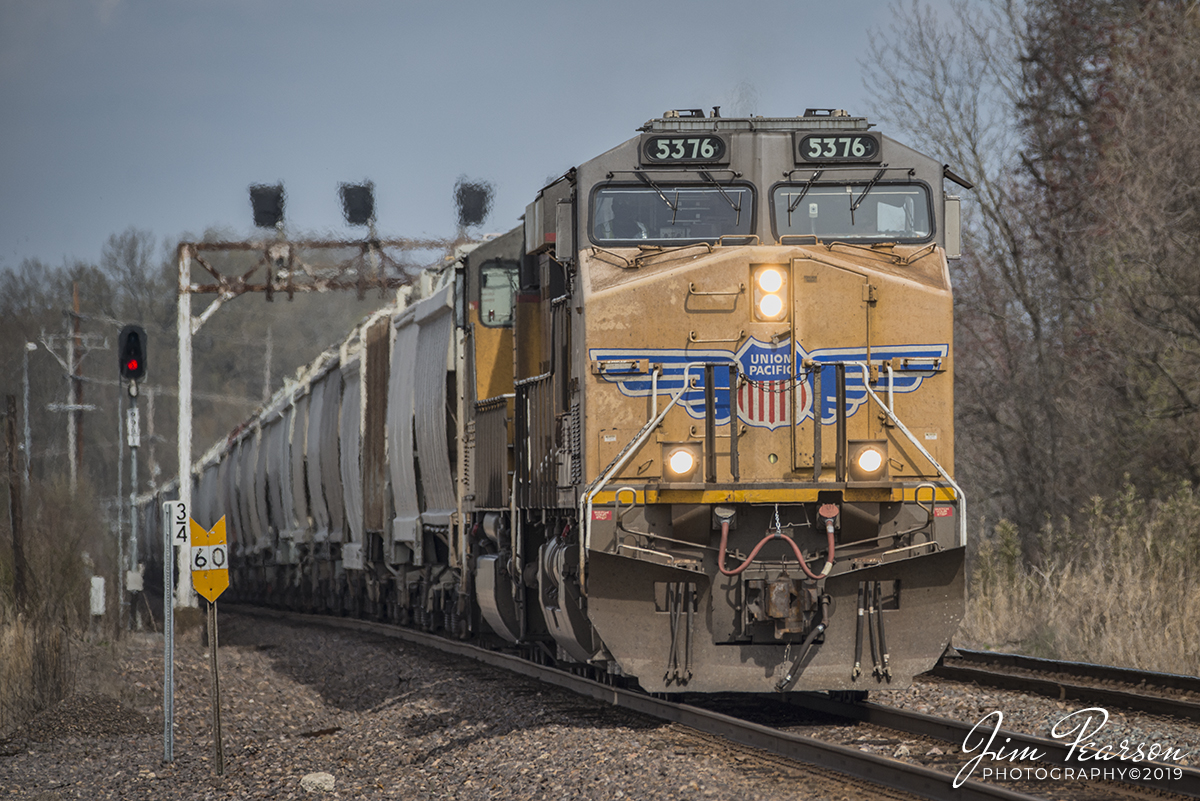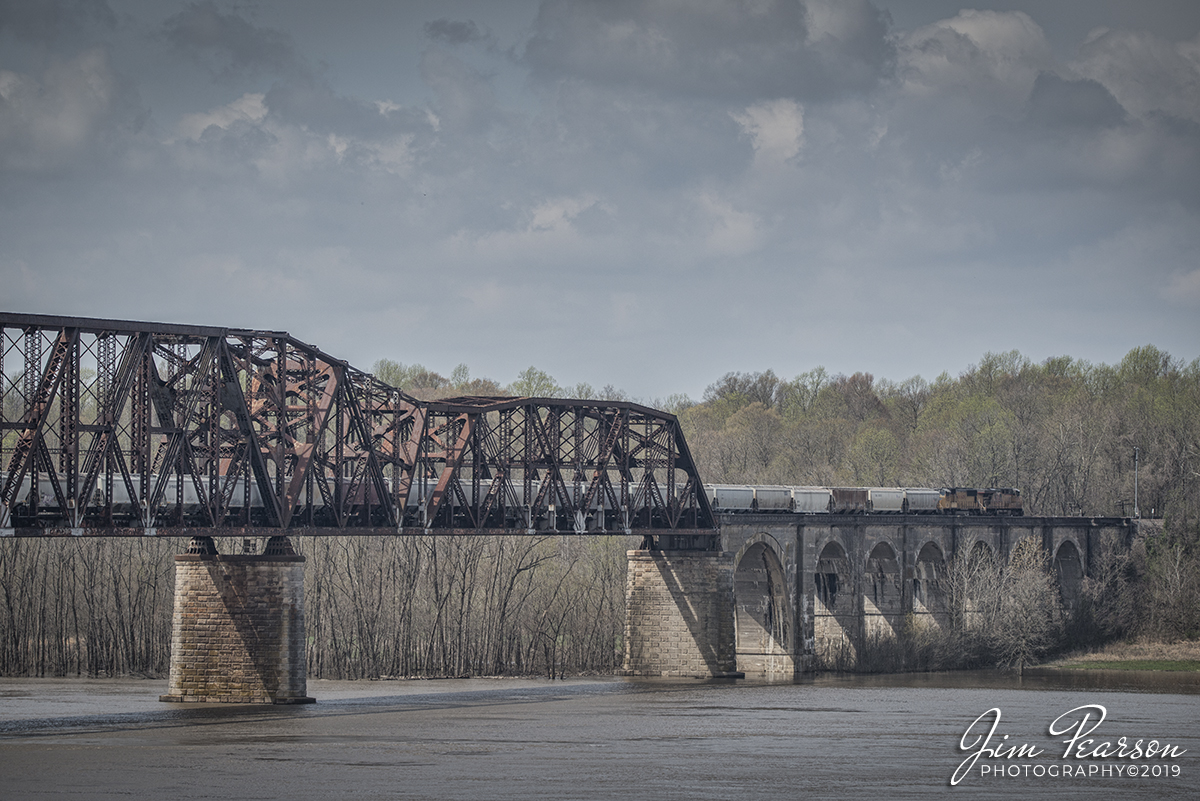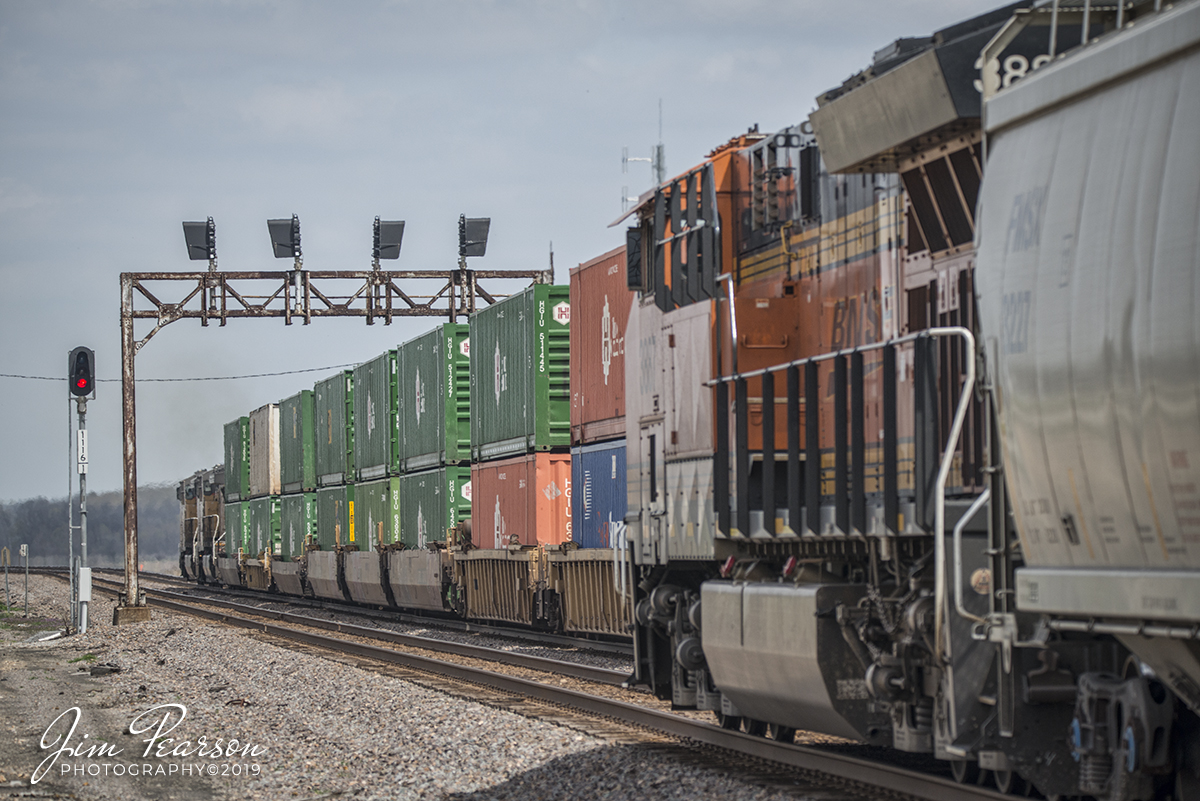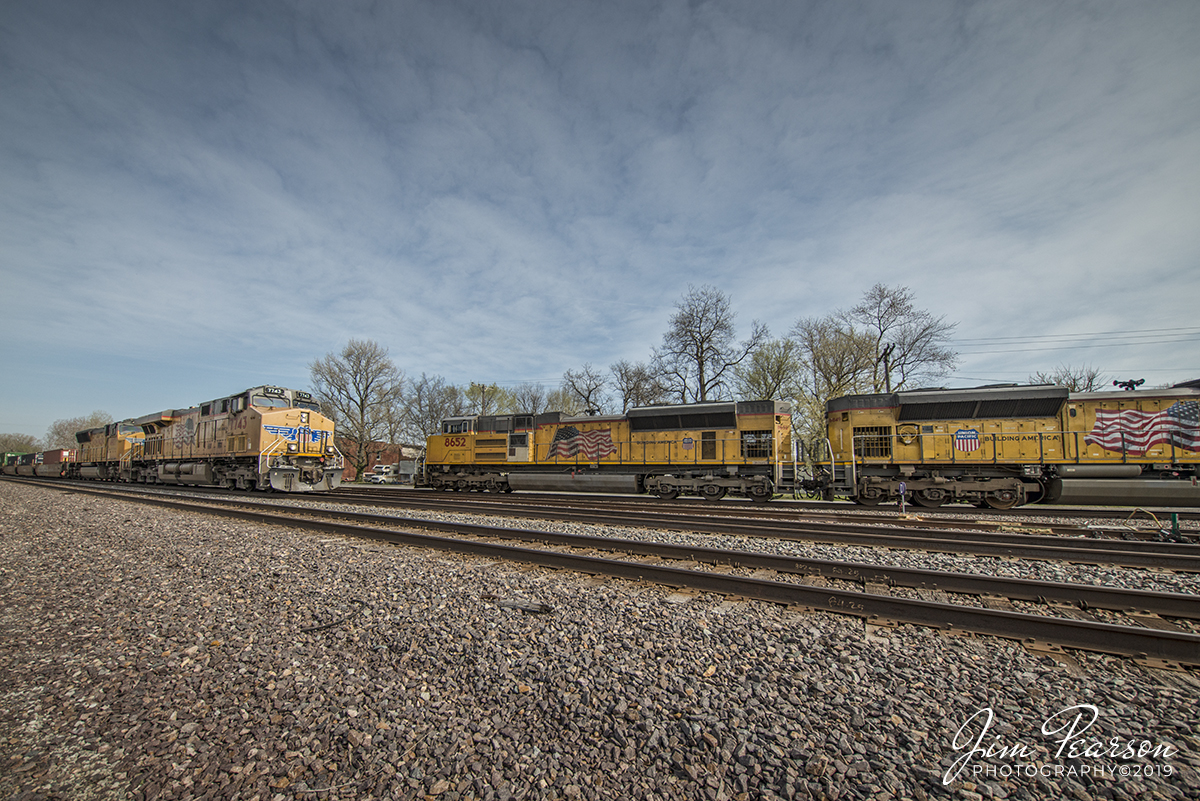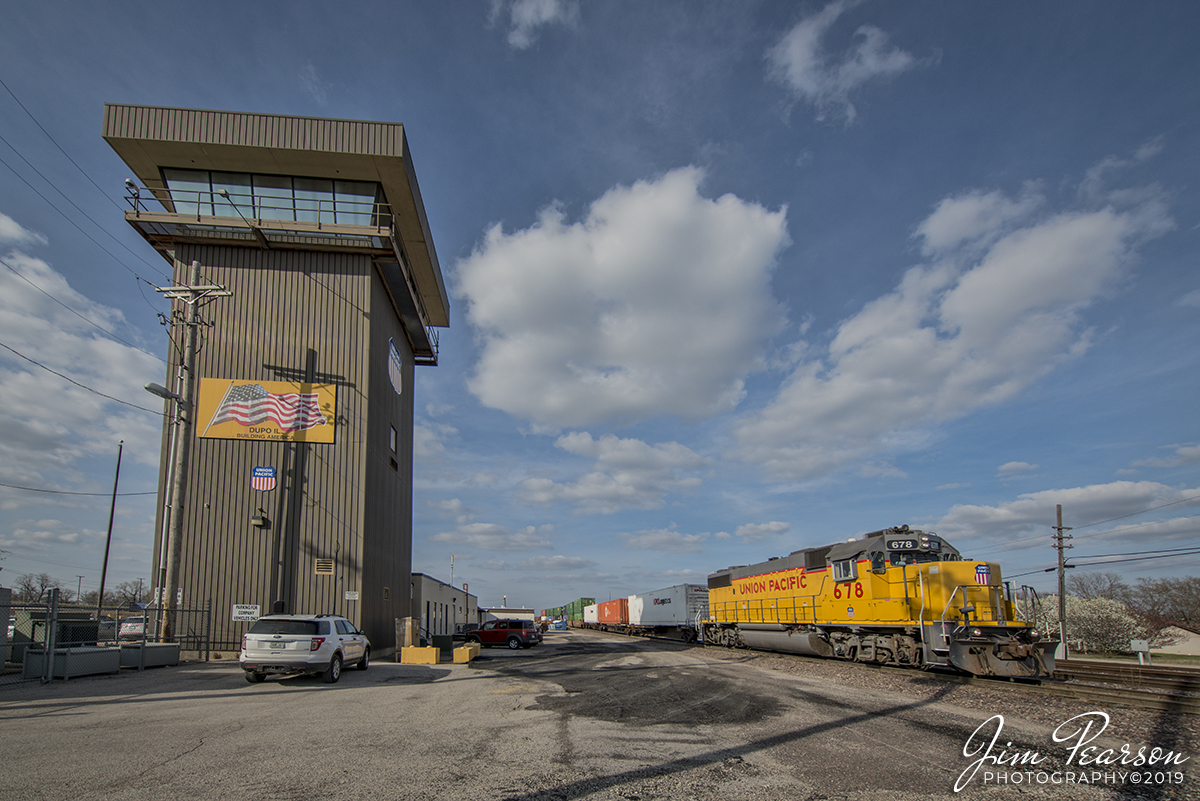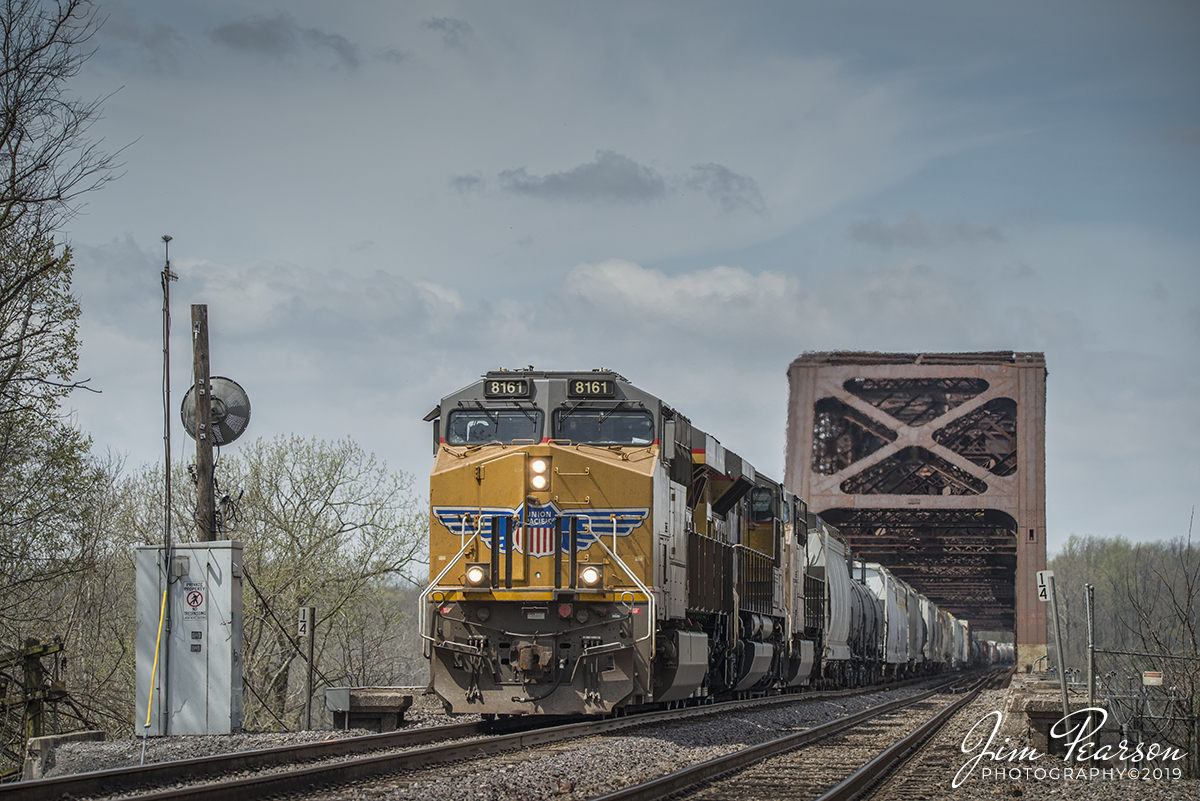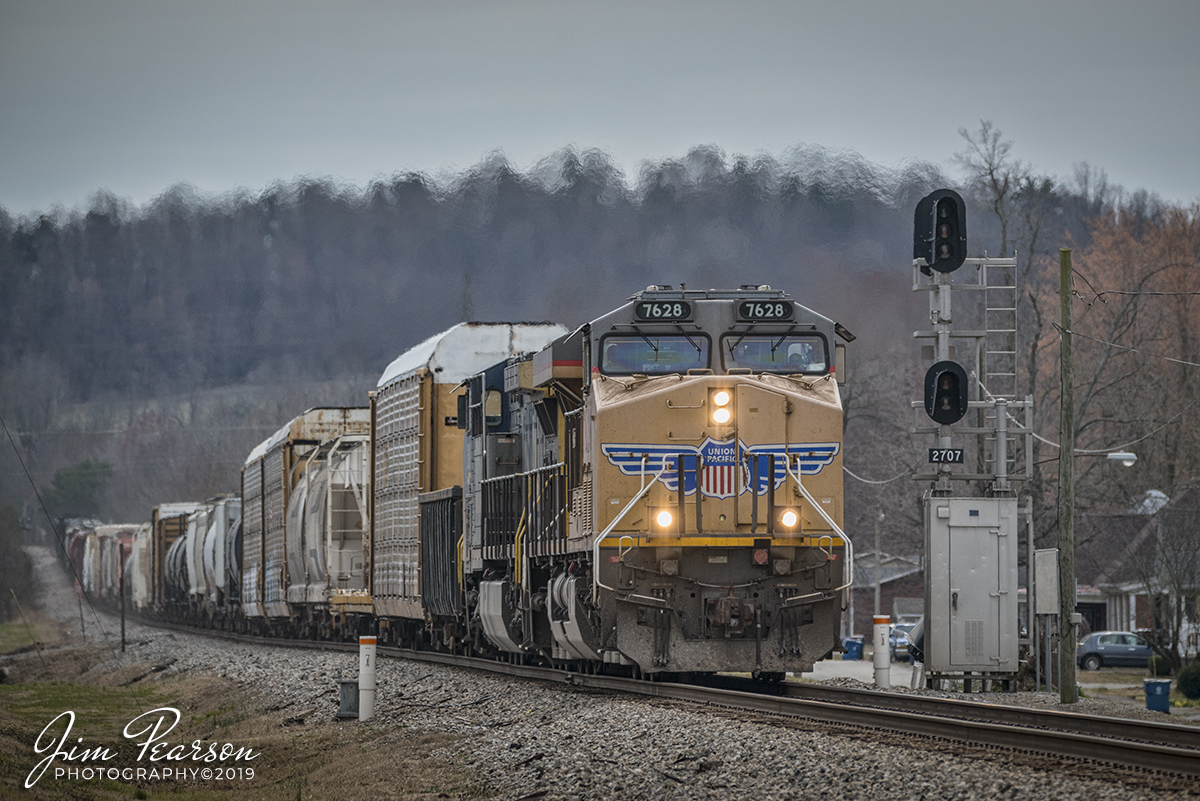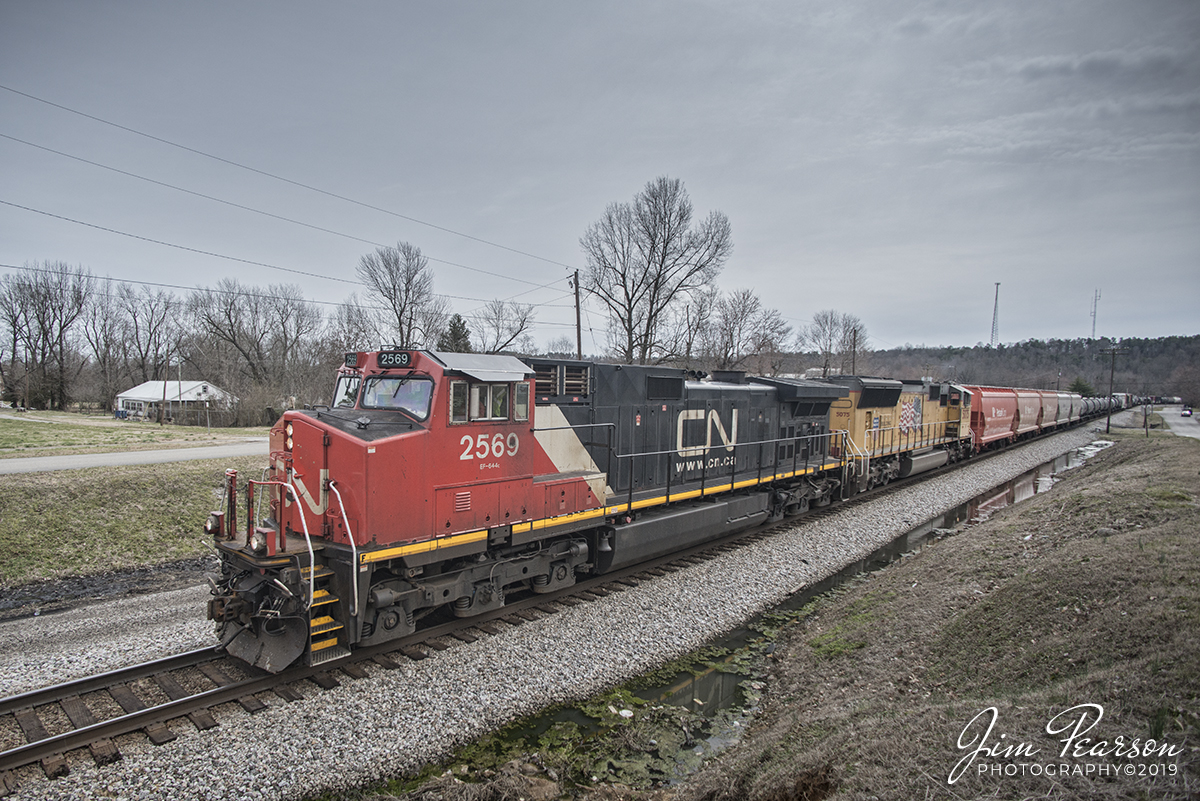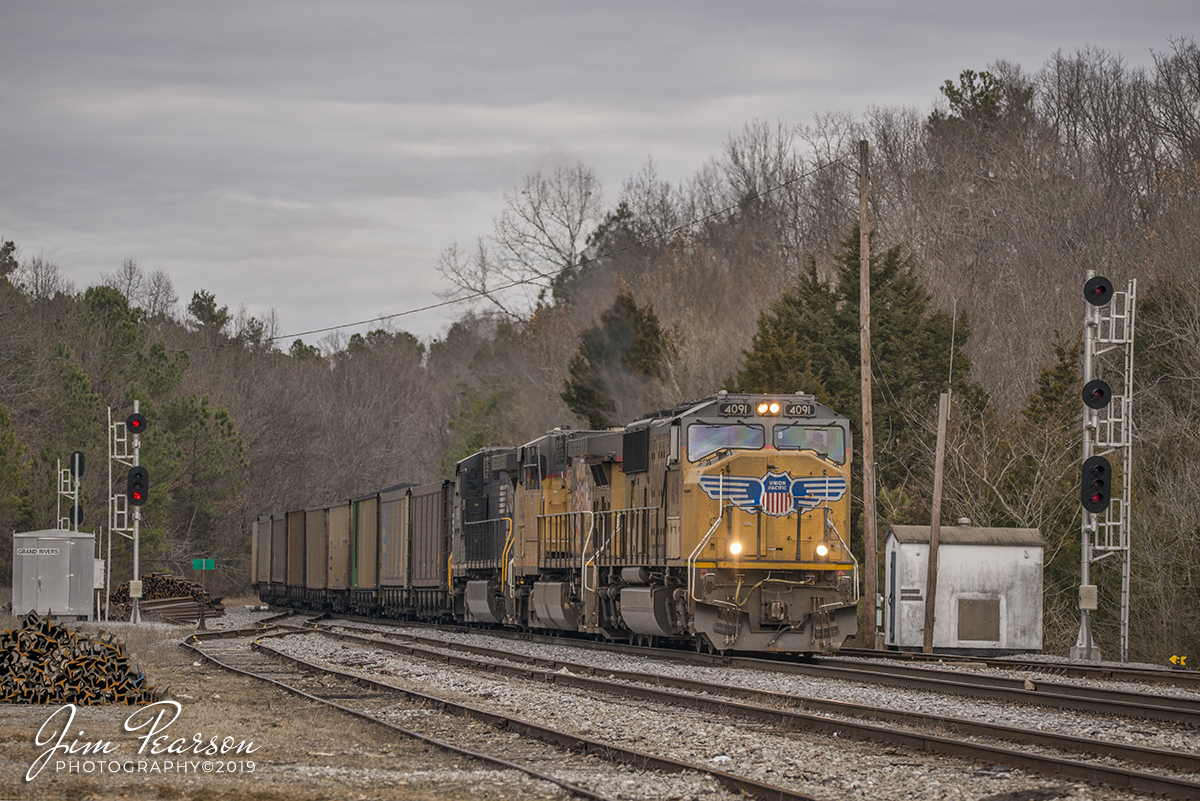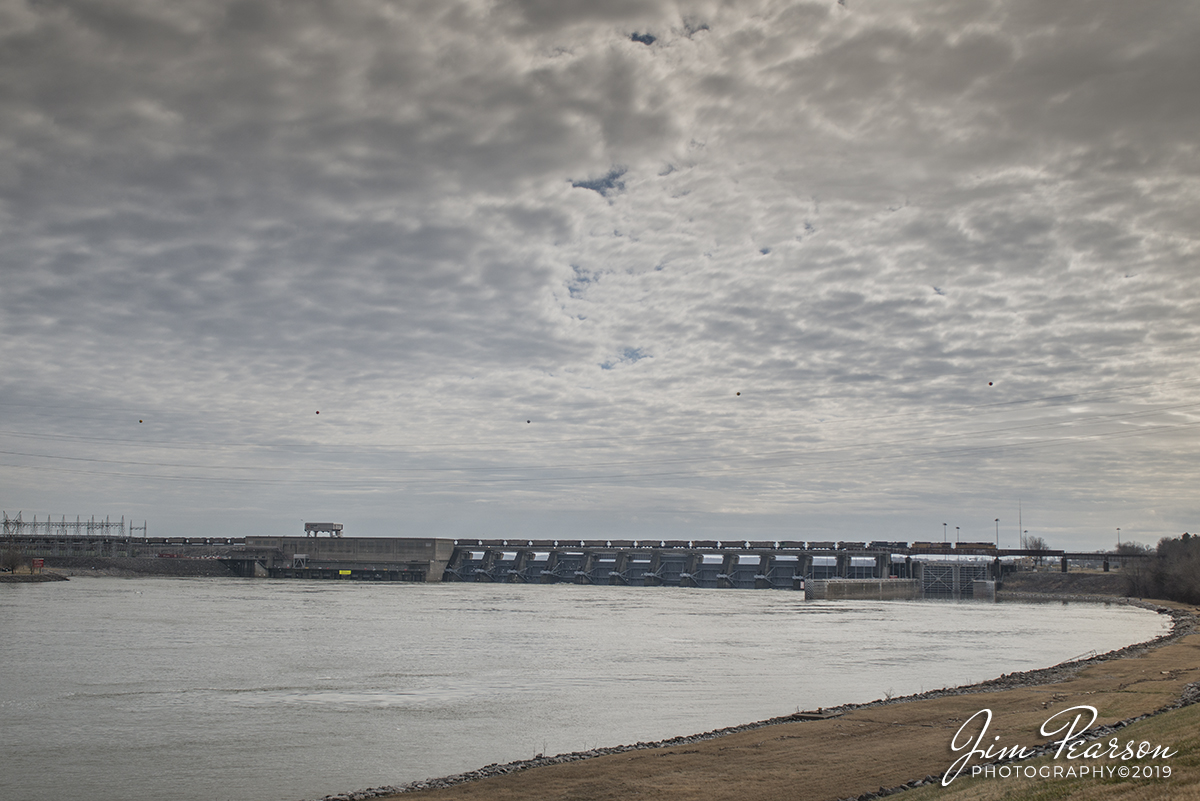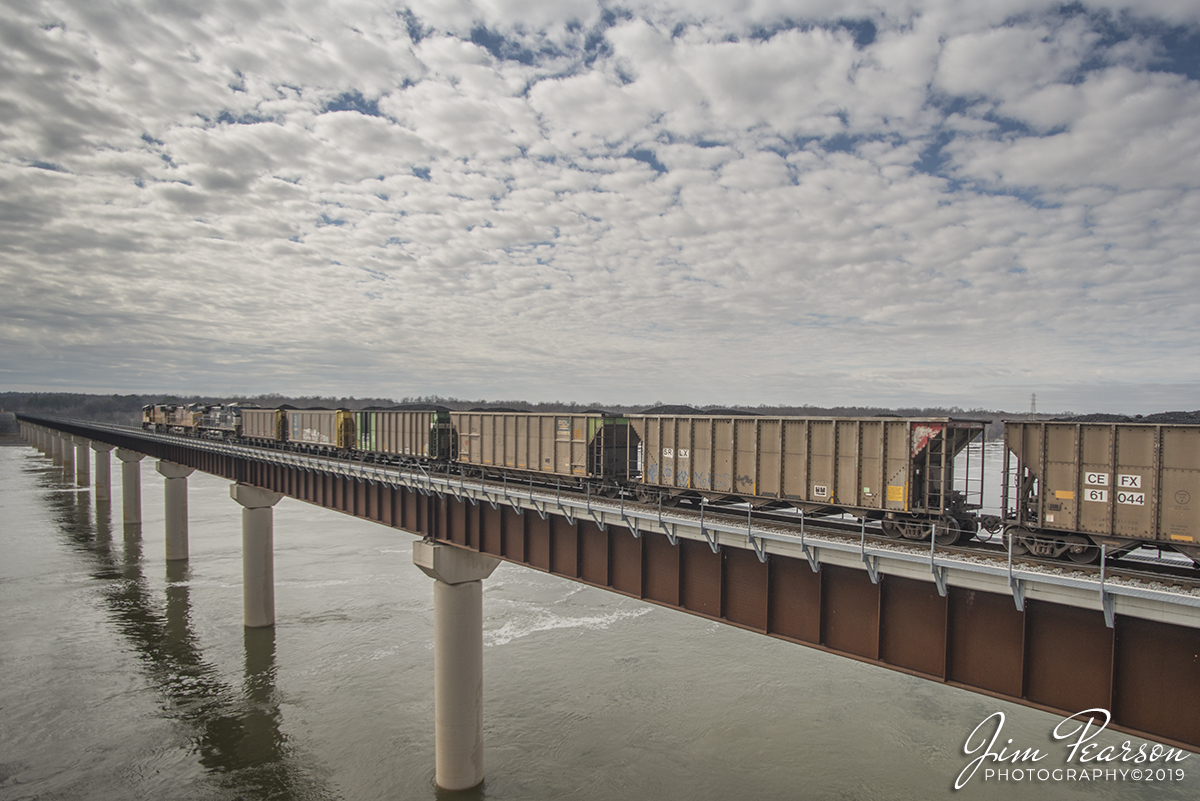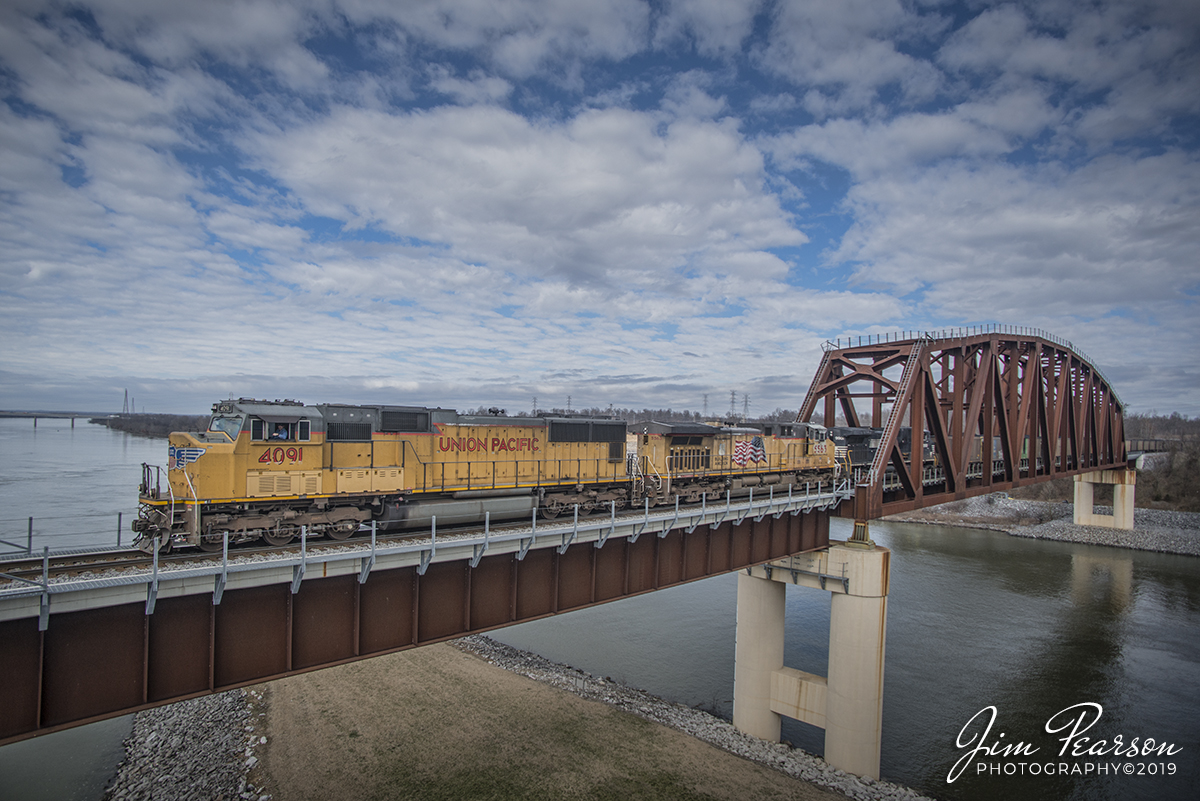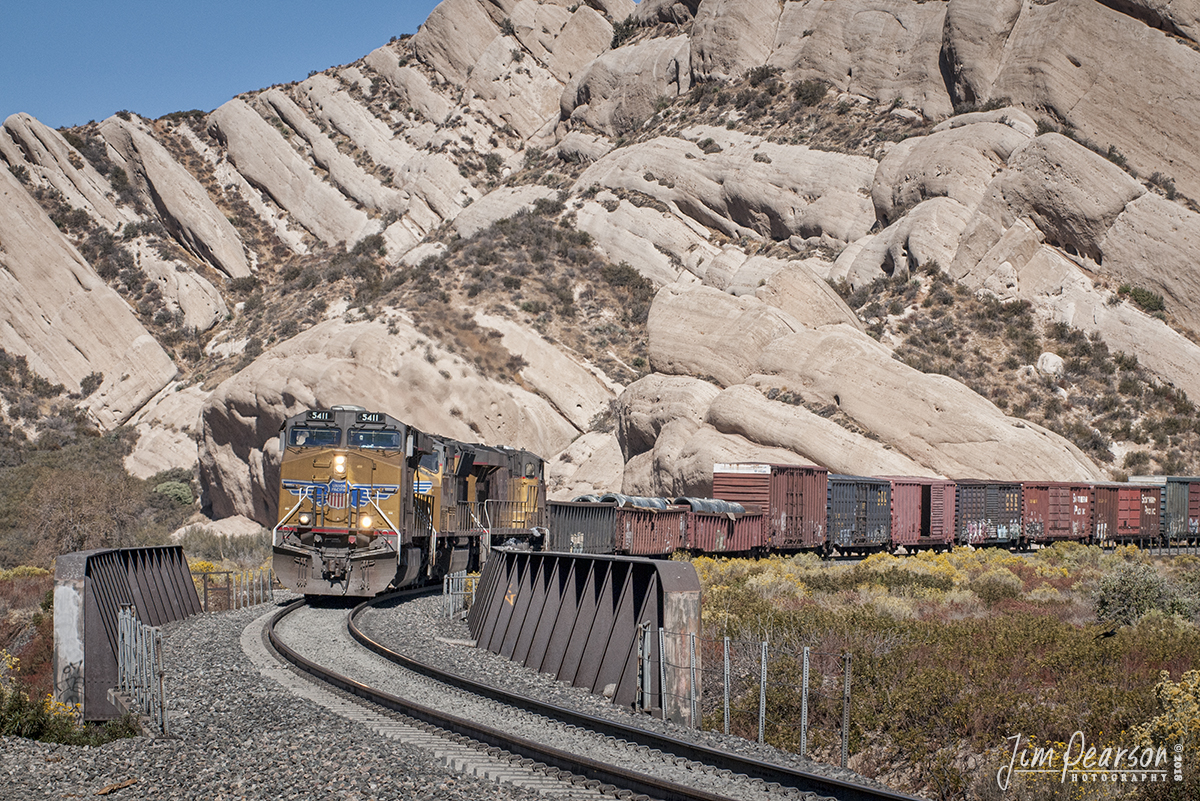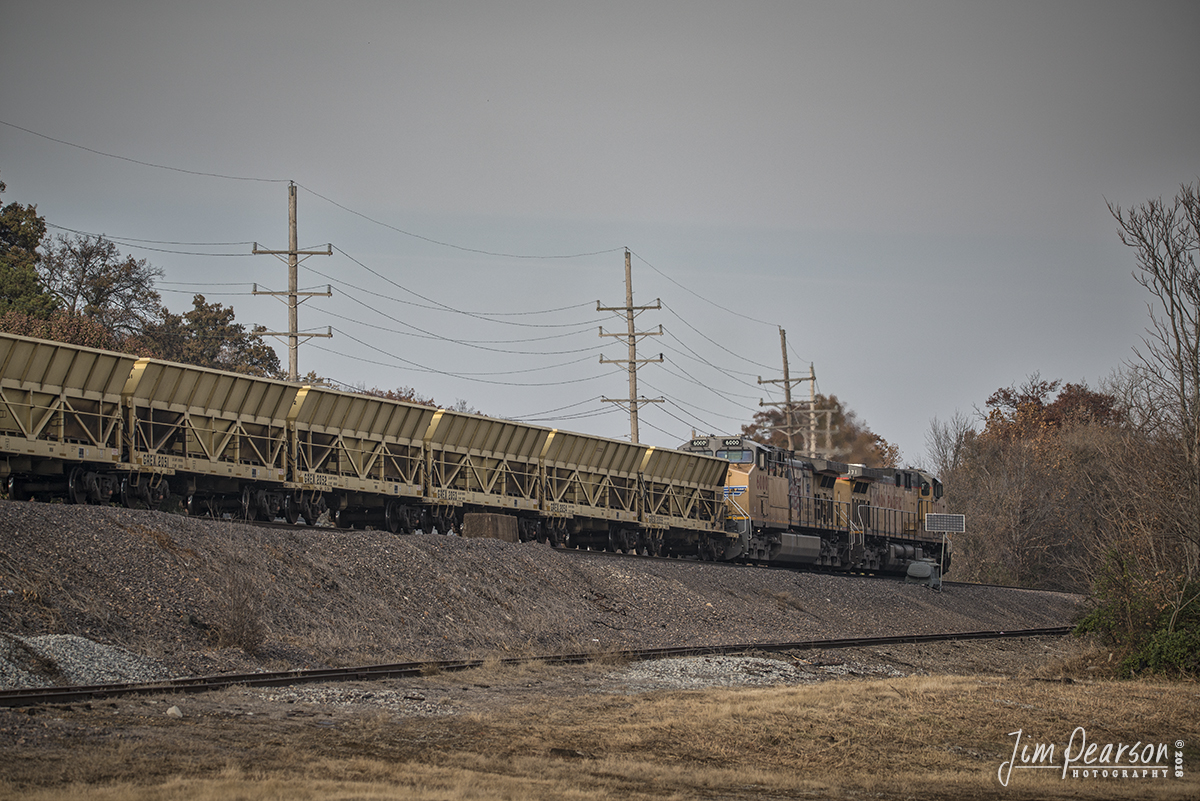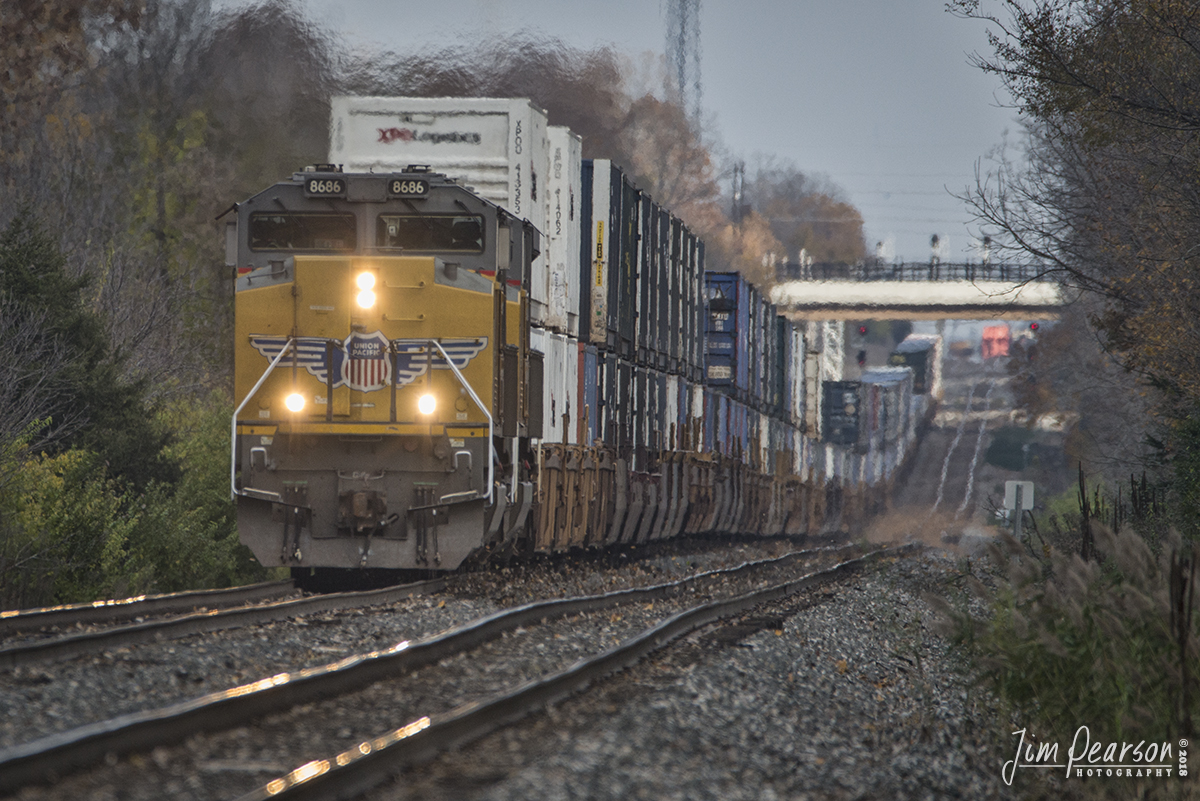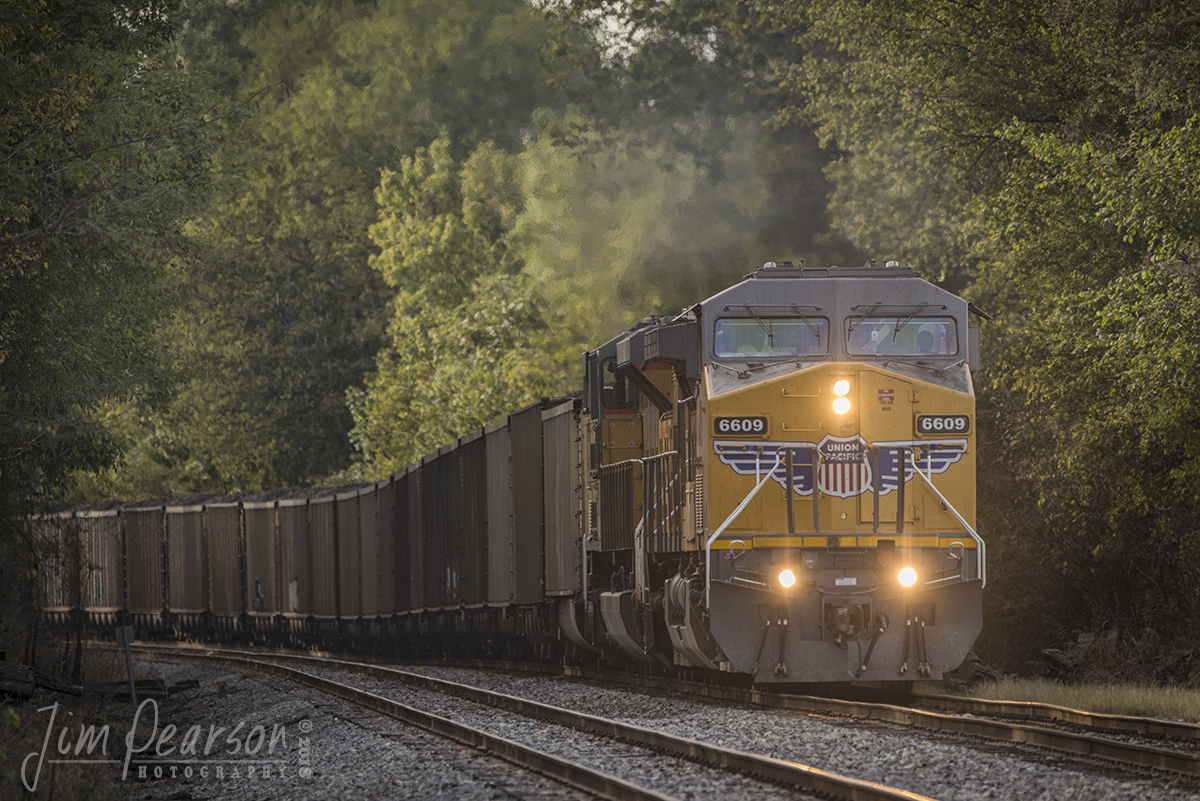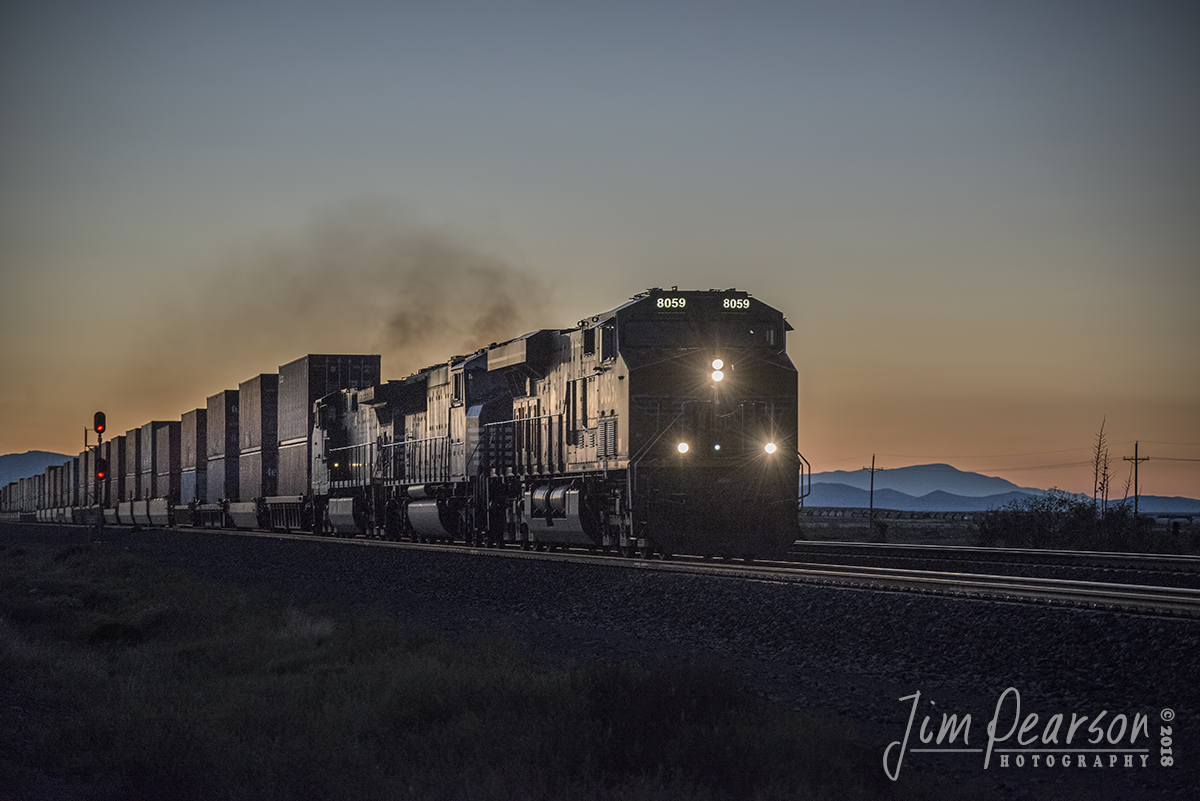April 6, 2019 – Burlington Northern Santa Fe, 4178 leads a northbound grain train at the signal bridge at McClure, Illinois on UP’s Chester Subdivision. – #jimstrainphotos #illinoisrailroads #trains #nikond800 #railroad #railroads #train #railways #railway #uprailroad #unionpacific #bnsfrailway #bnsf
Union Pacific 5376 passes under a signal bridge…
April 6, 2019 – Union Pacific 5376 passes under a signal bridge at Jonesboro, Illinois as it leads a grain train southbound on UP’s Chester Subdivision. – #jimstrainphotos #illinoisrailroads #trains #nikond800 #railroad #railroads #train #railways #railway #uprailroad #unionpacific
Union Pacific 8161 leads a mixed freight…
April 6, 2019 – Union Pacific 8161 leads a mixed freight over the Mississippi River on the Thebes Bridge at Thebes, Illinois as it makes its way south on UP’s Chester Subdivision.
According to Wikipedia: The Thebes Bridge is a truss bridge carrying the Union Pacific Railroad (previously carried the Missouri Pacific and Southern Pacific, in a joint operation) across the Mississippi River between Illmo, Missouri and Thebes, Illinois. It is owned by the Southern Illinois and Missouri Bridge Company, now a UP subsidiary.
The Southern Illinois and Missouri Bridge Company was incorporated in Illinois on December 28, 1900 to own the bridge and 4.64 miles (7.47 km) of connecting rail line. It was initially owned equally by the Chicago and Eastern Illinois Railroad, Illinois Central Railroad, Missouri Pacific Railway, St. Louis, Iron Mountain and Southern Railway, and St. Louis Southwestern Railway.
The designer of the bridge was Polish-American engineer Ralph Modjeski. The Missouri Pacific and SLIM&S merged in 1917, and in 1945 the C&EI sold its 1/5 share to the Missouri Pacific, giving the latter company, since merged into the UP, a majority interest. – #jimstrainphotos #illinoisrailroads #trains #nikond800 #railroad #railroads #train #railways #railway #uprailroad #unionpacific
Burlington Northern Santa Fe, 3887 brings up the rear…
April 6, 2019 – Burlington Northern Santa Fe, 3887 brings up the rear as the DPU on a northbound grain train as a southbound Union Pacific intermodal passes it at the signal bridge at McClure, Illinois on UP’s Chester Subdivision. – #jimstrainphotos #illinoisrailroads #trains #nikond800 #railroad #railroads #train #railways #railway #uprailroad #unionpacific #bnsfrailway #bnsf
Union Pacific 7743 heads up a southbound intermodal…
April 6, 2019 – Union Pacific 7743 heads up a southbound intermodal, as it passes UP 8652 and 6849 on a waiting northbound loaded coal train at Gorham, Illinois as, it heads southbound on UP’s Chester Subdivision. – #jimstrainphotos #illinoisrailroads #trains #nikond800 #railroad #railroads #train #railways #railway #uprailroad #unionpacific
Union Pacific 678, GP38-2, heads up YDU21…
April 6, 2019 – Union Pacific 678, GP38-2, heads up YDU21 (Y-Yard DU-Dupo 2-2nd Shift 1-Ramp Job) uses the Material Track at the UP yard in Dupo, Illinois as it passes the tower while building an intermodal train. YDU21 pulls and spots intermodal cars on the ramp and builds two outbound trains, one for North Platte, NE (IDUNP) and points beyond and second train is UPS for Mesquite, TX (ZDUMQ). – #jimstrainphotos #illinoisrailroads #trains #nikond800 #railroad #railroads #train #railways #railway #unionpacific #dupoillinois #uptrain
Union Pacific 8161 leads a mixed freight…
April 6, 2019 – Union Pacific 8161 leads a mixed freight over the Mississippi River on the Thebes Bridge at Thebes, Illinois as it makes its way south on UP’s Chester Subdivision.
March 13, 2019 – CSX Q500-13…
March 13, 2019 – CSX Q500-13 (Nashville, TN – Chicago, IL) passes the signal at MP 270.7 as Union Pacific 7628 leads the train north through Earlington, Kentucky on the Henderson Subdivision. – #jimstrainphotos #kentuckyrailroads #trains #nikond800 #railroad #railroads #train #railways #railway #csx #csxrailroad
March 12, 2019 – CN 2569 leads CSX Q500-12…
March 12, 2019 – CN 2569 leads CSX Q500-12 as it heads through Mortons Gap, Ky with UP 5075 trailing on its way north on the Henderson Subdivision. – #jimstrainphotos #kentuckyrailroads #trains #nikond800 #railroad #railroads #train #railways #railway #csx #csxrailroad #cnrailway #uprailroad
February 2, 2019 – Union Pacific 4091 heads up…
February 2, 2019 – Union Pacific 4091 heads up Paducah and Louisville Railway WYX1 (Z4091) as it pulls away from Grand Rivers, Ky, after completing a crew change, with a loaded train of coke bound for Calvert City Terminal. – #jimstrainphotos #kentuckyrailroads #trains #nikond800 #railroad #railroads #train #railways #railway #pal #palrailway #paducahandlouisvillerailway
February 2, 2019 – Union Pacific 4091 heads up…
February 2, 2019 – Union Pacific 4091 heads up Paducah and Louisville Railway WYX1 (Z4091) as it heads across Barkley Dam southbound over the Cumberland River at Grand Rivers, Ky with a loaded train of coke bound for Calvert City Terminal. –#jimstrainphotos#kentuckyrailroads#trains#nikond800#railroad#railroads#train#railways#railway#pal#palrailway#paducahandlouisvillerailway
February 2, 2019 – Union Pacific 4091 heads up…
February 2, 2019 – Union Pacific 4091 heads up Paducah and Louisville Railway WYX1 (Z4091) as it heads away southbound over the Tennessee River at Kentucky Dam in Gilbertsville, Ky with a loaded train of coke bound for Calvert City Terminal. – #jimstrainphotos #kentuckyrailroads #trains #nikond800 #railroad #railroads #train #railways #railway #pal #palrailway #paducahandlouisvillerailway
February 2, 2019 – Union Pacific 4091 heads up…
February 2, 2019 – Union Pacific 4091 heads up Paducah and Louisville Railway WYX1 (Z4091) as it heads south over the Tennessee River at Kentucky Dam in Gilbertsville, Ky with a loaded train of coke bound for Calvert City Terminal. – #jimstrainphotos #kentuckyrailroads #trains #nikond800 #railroad #railroads #train #railways #railway #pal #palrailway #paducahandlouisvillerailway
October 20, 2008 – Union Pacific 5411 leads a mixed freight…
October 20, 2008 – Union Pacific 5411 leads a mixed freight westbound past Mormon Rocks in the southern California’s famous Cajon Pass.
According to Wikipedia: Cajon Pass (/k-‘ho-n/; elevation 3,777 ft (1,151 m) is a mountain pass between the San Bernardino Mountains and the San Gabriel Mountains in Southern California in the United States. It was created by the movements of the San Andreas Fault. Located in the Mojave Desert, the pass is an important link from the Greater San Bernardino Area to the Victor Valley, and northeast to Las Vegas.
Cajon Pass is at the head of Horsethief Canyon, traversed by California State Route 138 (SR 138) and railroad tracks owned by BNSF Railway and Union Pacific Railroad. Railroad improvements in 1972 reduced its maximum elevation from about 3,829 to 3,777 feet (1,167 to 1,151 m) while also reducing the curvature. Interstate 15 does not traverse Cajon Pass, but rather the nearby Cajon Summit, elevation 4,260 feet (1,300 m). However, the entire area including Cajon Pass and Cajon Summit is often collectively called Cajon Pass. Sometimes the entire area is called Cajon Pass, but a distinction is made between Cajon Pass and Cajon Summit in detail.
Mormon Rocks
In 1851, a group of Mormon settlers led by Amasa M. Lyman and Charles C. Rich traveled through the Cajon Pass in covered wagons on their way from Salt Lake City to southern California. This prominent rock formation in the pass, where the Mormon trail and the railway merge (near Sullivan’s Curve), is known as Mormon Rocks.
November 17, 2018 – A Union Pacific Railroad work train…
November 17, 2018 – A Union Pacific Railroad work train passes through Valley Park, MO with UP 7271 & 6000 leading, as it heads east toward Kirkwood, MO on the Jefferson City Subdivision. – #jimstrainphotos #missourirailroads #trains #nikond800 #railroad #railroads #train #railways #railway #up #uprailroad
October 3, 2018 – Union Pacific 8686 leads CSX Q131 Westbound…
October 3, 2018 – Union Pacific 8686 leads CSX Q131 Westbound as it pulls out of the west end of Avon Yard at Indianapolis, Indiana with it’s intermodal train. – #jimstrainphotos #indianarailroads #trains #nikond800 #railroad #railroads #train #railways #railway #csx #csxrailroad #uprailroad #unionpacific
October 17, 2018 – Union Pacific 6609 leads…
October 17, 2018 – Union Pacific 6609 leads a loaded coal train around the curve approaching MP 211.5 as it heads north along the Paducah and Louisville Railway, headed for the Calvert City Terminal, at Calvert City, Ky in the glow of the late afternoon sun. – #jimstrainphotos #kentuckyrailroads #trains #fujixt1 #railroad #railroads #train #railways #railway #csx #csxrailroad
October 17, 2018 – A patched Union Pacific 6378 (AC44CW), former SP 311 (AC44CW)…
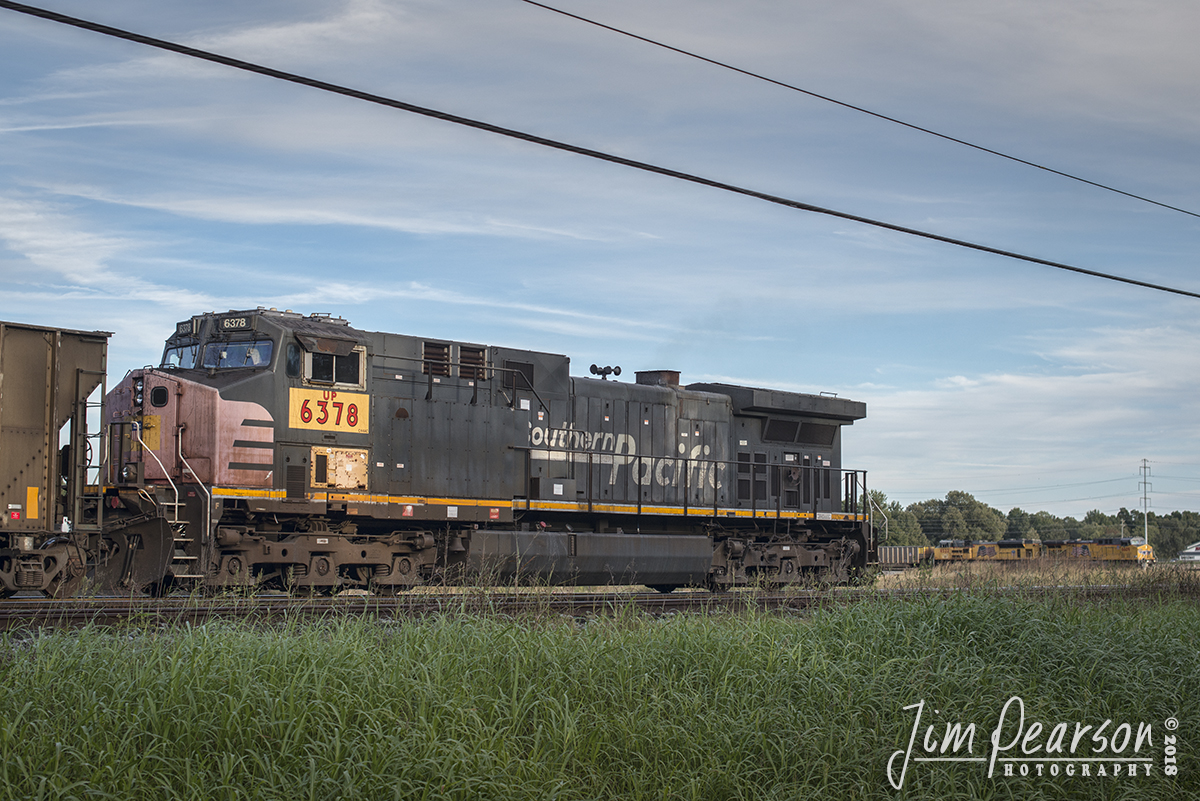
October 17, 2018 – A patched Union Pacific 6378 (AC44CW), former SP 311 (AC44CW), brings up the rear as the DPU of a UP loaded coal train as it enters the loop at Calvert City Terminal in Calvert City, Ky to deliver a load of coal. – #jimstrainphotos #kentuckyrailroads #trains #nikond800 #railroad #railroads #train #railways #railway #csx #csxrailroad
October 17, 2018 – Union Pacific 6609 leads a loaded coal…
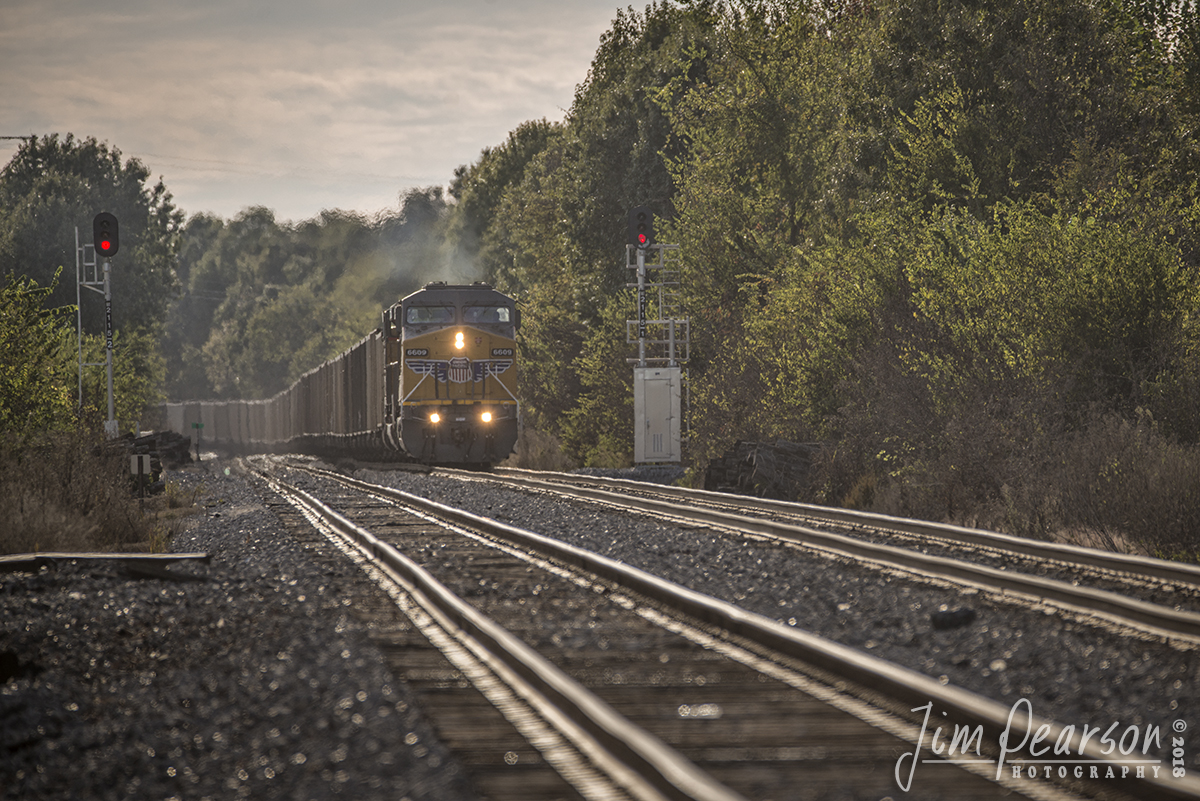
October 17, 2018 – Union Pacific 6609 leads a loaded coal train past the signals at MP 211.5 as it heads north along the Paducah and Louisville Railway, headed for the Calvert City Terminal, at Calvert City, Ky in the glow of the late afternoon sun. – #jimstrainphotos #kentuckyrailroads #trains #fujixt1 #railroad #railroads #train #railways #railway #csx #csxrailroad
October 17, 2018 – Union Pacific 6609 leads…
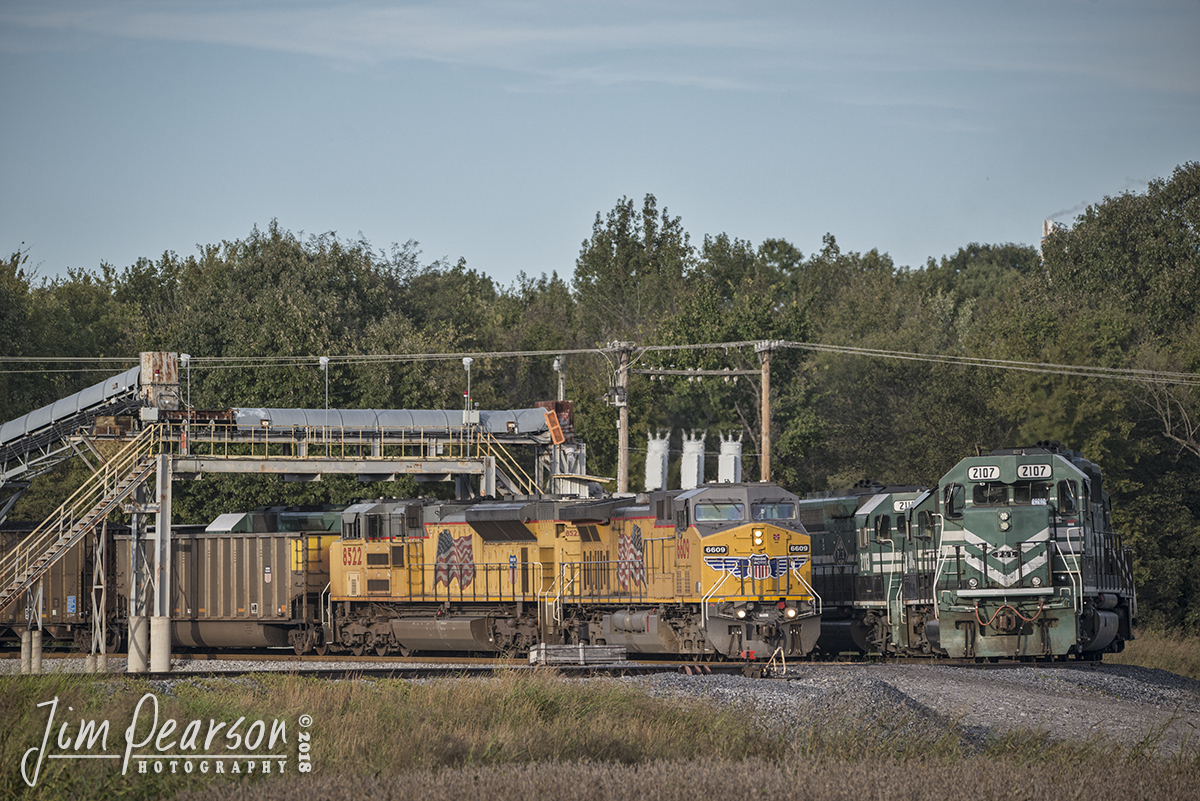
October 17, 2018 – Union Pacific 6609 leads a loaded coal train, past a string of 7 Paducah and Louisville units on an empty coal train, at the Calvert City Terminal in Calvert City, Kentucky as it prepares to unload. – #jimstrainphotos #kentuckyrailroads #trains #nikond800 #railroad #railroads #train #railways #railway #csx #csxrailroad

